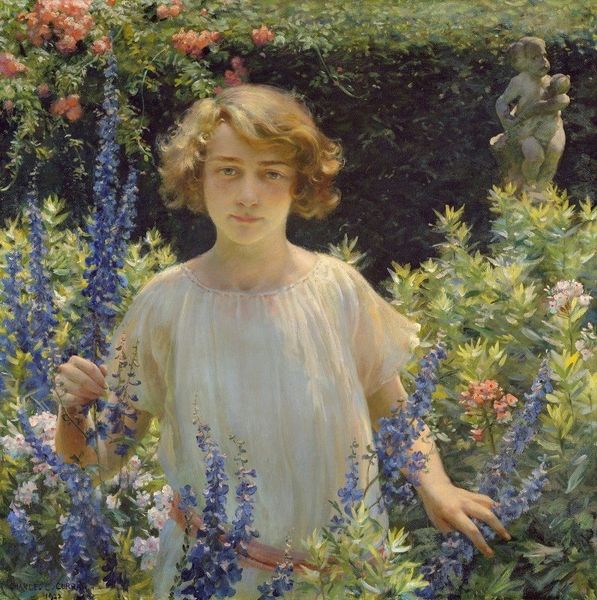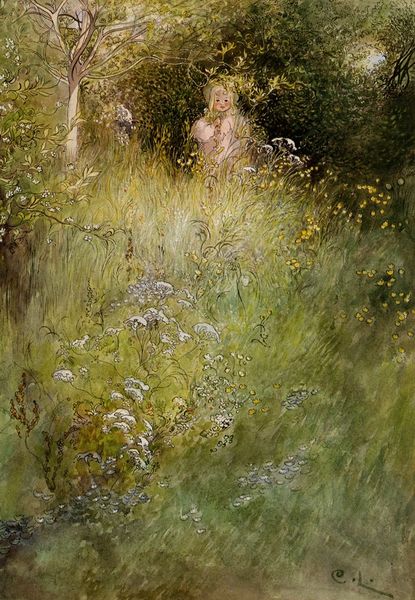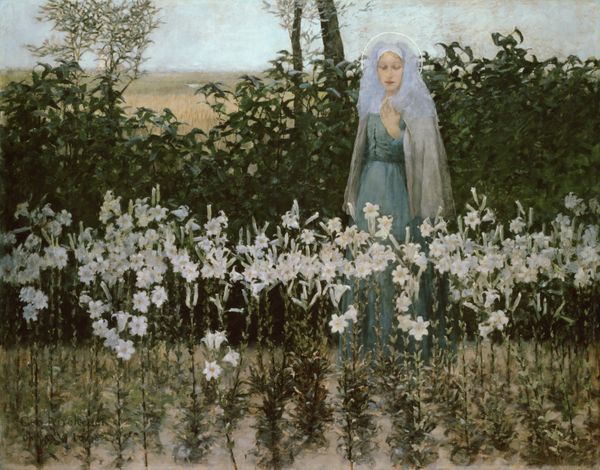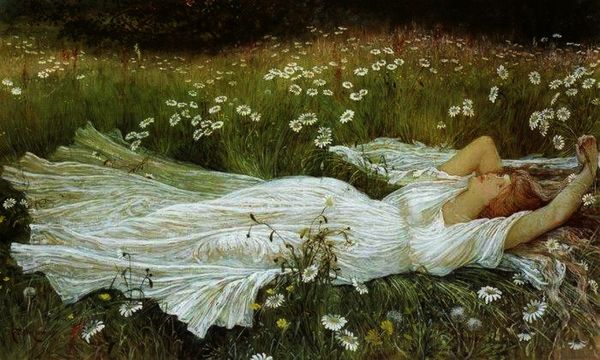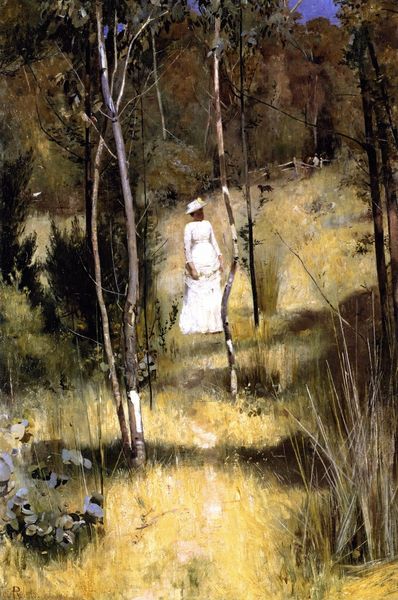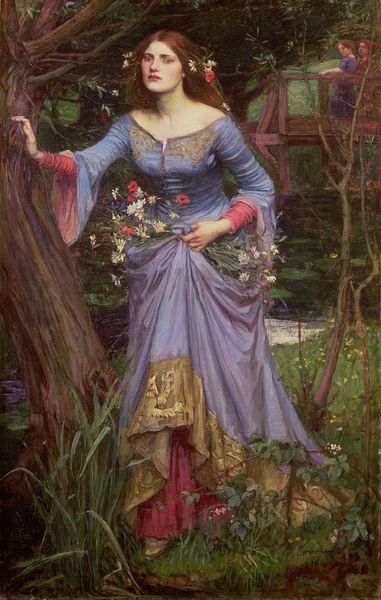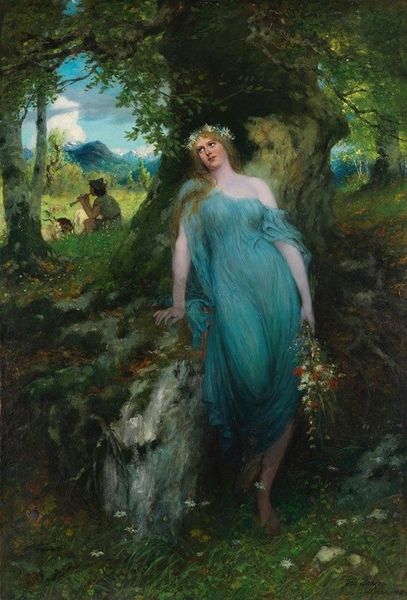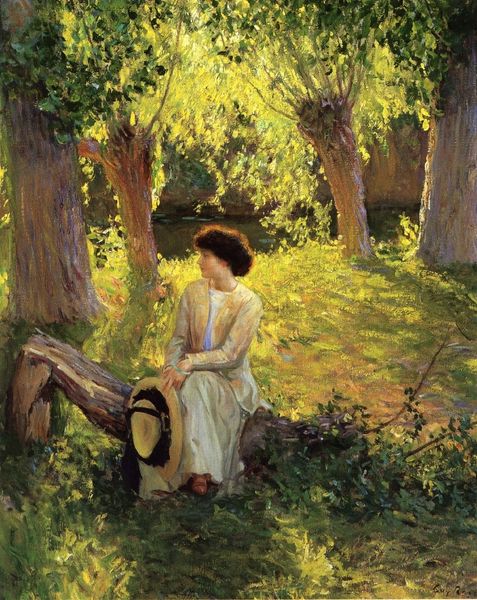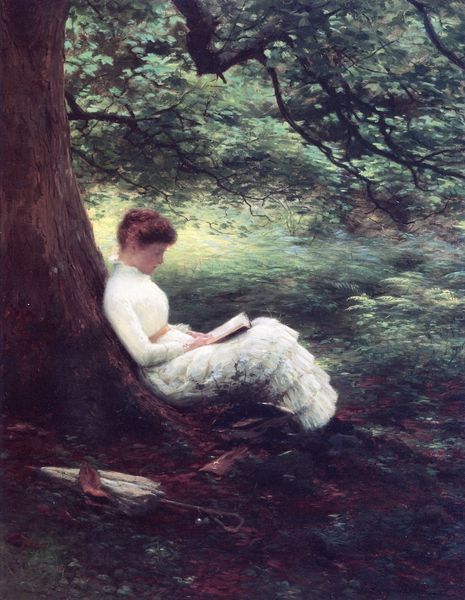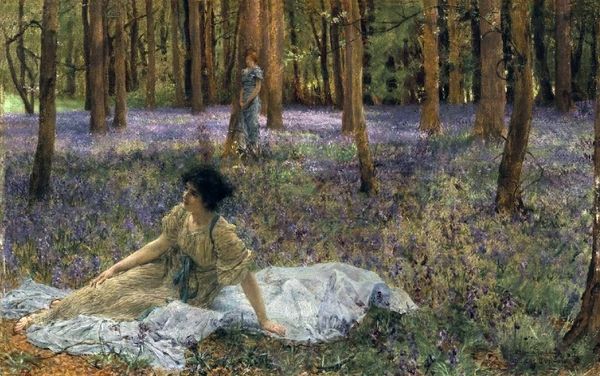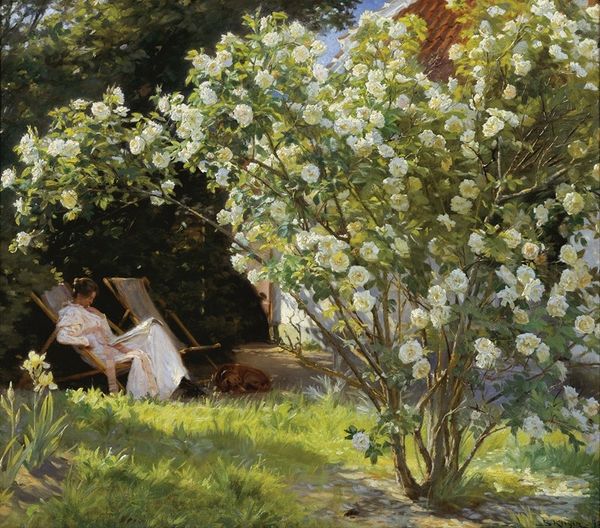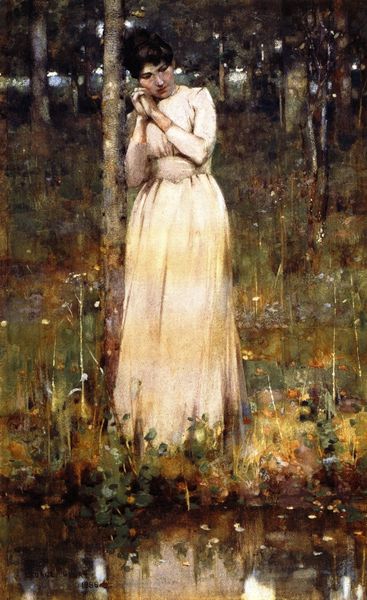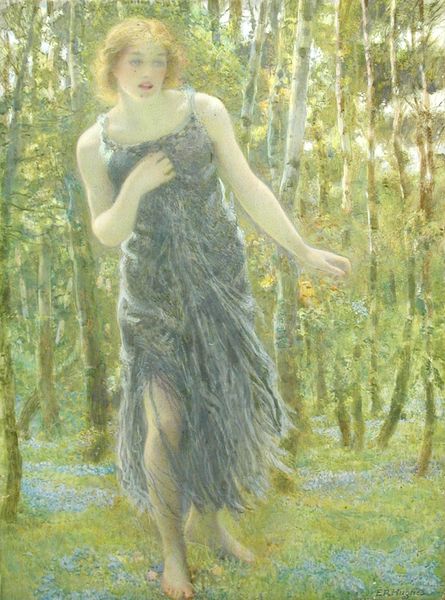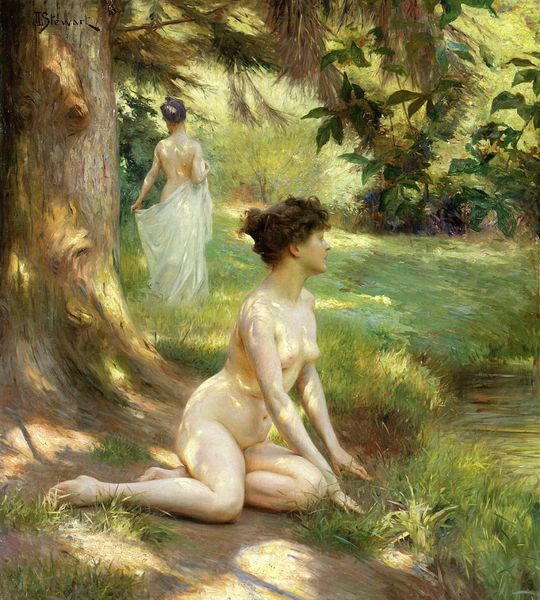
Copyright: Public Domain: Artvee
Editor: Here we have Charles Courtney Curran's "The Edge of the Woods," created in 1912. It's a stunning piece, with a lone figure nestled amongst this really vibrant natural scene. What do you make of it? Curator: It immediately brings to mind questions of female representation within idealized landscapes. Consider the historical context. During the late 19th and early 20th centuries, depictions of women in nature were often intertwined with notions of purity, domesticity, and a retreat from the increasingly industrialized world. What kind of power dynamic do you think that creates? Editor: That's interesting, because it feels a little like a fairy tale scene, almost an escape. Curator: Exactly. But whose escape is it, and what are they escaping from? The Impressionistic style softens the edges, literally and figuratively. It veils potential anxieties regarding gender roles and societal expectations. The 'edge of the woods' is a border, isn't it? Editor: A border, yes. Between the tamed and the wild? Is the woman part of the wild, or separated from it? Curator: Perhaps she's meant to embody the romanticized notion of being 'one with nature', untouched by the struggles of the emerging modern era, a space reserved for her that lacks any agency. Editor: I didn't consider that point of view! I initially saw the figure as powerful in her domain. Curator: That's the complexity of art! And that's what makes interpreting it such a rewarding exercise, understanding how cultural perspectives can change and affect its understanding. Thank you. Editor: Thanks for making me think about the social context, I'll certainly remember that.
Comments
No comments
Be the first to comment and join the conversation on the ultimate creative platform.
